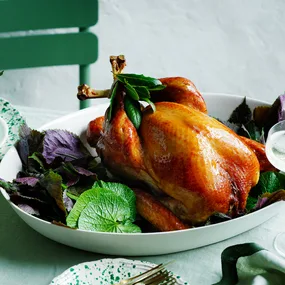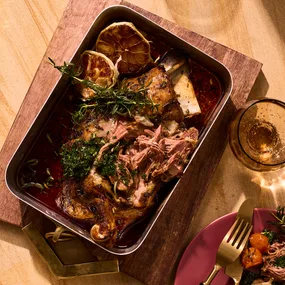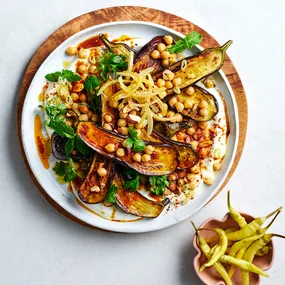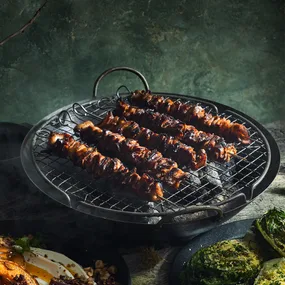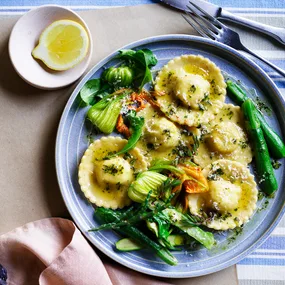The first step in mastering the enigmatic gnocchi di patate is selecting the correct potato. The ideal potato is an old starchy potato – not too floury and never waxy – scrubbed clean and cooked whole in its skin. Russet Burbank and Nicola are our preferred varieties.
There are two camps of potato cookers: the boilers and the bakers. Those in the baking camp claim baking the potato results in a drier mixture, one that requires the addition of less flour, which means fluffier gnocchi. Tradition and experience, however, sway us in favour of boiling. That said, it’s important to refrain from prodding the potato as you boil it, because piercing the skin will lead to a waterlogged mess. Equally important is selecting potatoes of similar size, so they cook evenly and in the same amount of time.
Once the potatoes are tender, drain them and give them a moment to steam in the colander, evaporating excess moisture. Leave them until they’re cool enough to handle, then peel them and press them through a ricer. Potato ricers, which are available from select cookware shops for under $50, are as essential to gnocchi-making as the potatoes themselves. A mouli or food mill will give good results too, but unless you’re planning to make enormous quantities of gnocchi, the larger investment isn’t necessary.
Press the potato through the ricer onto a lightly floured work surface, add most of the flour and knead lightly until the dough is both smooth and just a little sticky at the same time. Be wary of over-kneading, which can activate the gluten, resulting in rubbery lumps.
Test the gnocchi mixture at this stage. Pinch a walnut-sized piece of dough and drop it into a saucepan of salted simmering water. If the gnoccho disintegrates, you’ll need to add more flour to the mixture – crisis averted. Ideally, though, it should plump and float to the surface, at which point you should remove it and taste it. If it’s too floury, it may need another 5-10 seconds of cooking. Take note for next time to be a little less heavy-handed with the flour.
The magic is in the feel of the dough, and each time you make gnocchi the amount of flour needed will vary, depending on the levels of starch and moisture in the potatoes. Over time you’ll perfect the technique to the point where you’ll no longer need to weigh the flour and will achieve a supple dough by touch alone.
Rolling and shaping is next: a gnoccho around 3cm long is a good mouthful. Smooth little pillows work well tossed in butter, cheese, pesto and light sauces, while ridged gnocchi are the perfect vehicles for a rich ragù (as in this short rib ragù recipe).
To shape ridged gnocchi, lightly dust a fork and hold it almost parallel to the bench. Place a gnoccho on the fork and roll it smoothly down the tines with your thumb, lightly flicking at the end to create an indentation with your thumb. Transfer the finished gnocchi to a tray.
It’s essential to cook the gnocchi immediately after you’ve shaped all the dough, because they’ll soon discolour to a dismal grey. They do, however, freeze well if you layer them with baking paper in a container and seal it tightly.
Cook gnocchi in batches in a large saucepan of salted simmering water – it’s best to cook them in small batches so they have plenty of room to plump without becoming one giant dumpling. Remove them with a slotted spoon, transfer to a serving dish, toss with your sauce and discover the marvel of the unassuming gnocchi.


